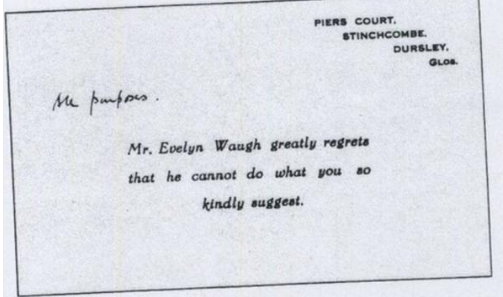Handle clients better, and your assignment will go much smoother!
Did you notice? It’s the dream job. The staff are perfect. The management team is on your side. But there’s just one problem.
I found myself in this situation last week. Brand new General Manager. Just not speaking the same ‘language’ we were all speaking.
I knew it was my problem. He’s new. He’s powerful. To be honest, part of me wanted to kill him. The other part of me wanted to be professional. To complete the project, despite the resistance.
If you’ve ever been in a situation where two parts of you is warring on how to proceed, you’re not alone. This particular war of parts is common. We want to work hard, but we want to relax. We want to be with the kids, but we should be analyzing a spreadsheet.
A simple technique to get over wanting to kill the client (and handle clients better!)
Here’s a technique I use when coaching clients in this situation.
Perhaps, next time you find yourself in a situation where you want to be there but you don’t, you might try it.
Essentially this technique, a ‘Parts Negotiation’, gets you to work with the two warring parts of yourself. Like any negotiation, it works to understand what both parties want, and then find a middle ground where both can be happy.
On one level, it’s a simple pros and cons and action-planning exercise. And every coaching client I’ve ever used it with has noticed its profound effect.
How to do a parts negotiation with yourself (to handle clients better!)
You’ll need 3 chairs:
- One chair for the “whole” you, in the centre.
- One chair for the part that wants to strangle the client.
- One chair for the part of you that wants to stay in the job and be sensible.
You’ll also need 3 pieces of paper and a pen.
Set up the chairs and papers so each “part” has their own piece of paper.
Then you’ll go through 5 steps:
1. Discover what each part wants.
2. Discover what prevents this.
3. Make an offer (and counter offer), until they’re both happy.
4. Imagine it happening.
5. Make it happen.
It’s deceptively simple, as I said. I’ll take you through an actual example using my own desire to murder the client and, at the same time, be professional. When you try it, you’ll be surprised!
1. Discover what each part wants
So, the first step: Sitting in the centre chair, write down what the “whole you” wants. Be specific.
For me this was:
- Maintain my reputation.
- Deliver what the client needs.
- Make a difference.
- Get paid.
- Get referral work.
- To not work with idiots.
- To not look like an idiot myself.
- Be professional.
Next, identify the 2 parts sitting in the other chairs – for me they are the ‘murdering’ part, and the ‘professional’ part. Choose one, and sit in its chair. When you sit in this chair, take a moment to just fully be that part. I sit in the ‘Murderous’ chair, think murderous, blame my thoughts, think of killing the client, and now I write down what this part wants.
When that tirade has finished, I answer this question. What does this part want for the whole person, who sits in the middle there?
My answer: I want the whole person to be healthy, to do worthwhile work. I want recognition and appreciation for what she knows. I want her to be trusted.
So now I move to the third chair, the ‘Professional’ part. I truly get into that part’s shoes.
What does this part want? To do the right thing, be flexible, and find a way to make this work. I want to be patient and helpful, a “super-consultant”, and maintain my reputation.
What you’ll notice at this point is that many of the things the whole person wanted appear in the lists of either side. That’s clearly because the whole person wants what both parts- ‘murdering’ and ‘professional’- want. This is good, because it means we can negotiate.
The ‘Professional’ part wants the whole person to be happy and healthy. To have an opportunity to do new things, and to work with new and interesting people. Again, there are some commonalities with what the ‘Murderous’ part wants for the whole person.
2. Discover what prevents this
Now I sit in the middle chair, and read through what both sides want. This is a negotiation between 2 clients. You are responsible for allowing them to come to a conclusion. Don’t try to solve it from the middle, just understand it.
I return to the ‘Murderous’ chair. What stops this part from getting what it wants? ‘Murderous’ says ‘Professional’ is a brake. It stops her from shaking up the world, and making real change.
From her chair, ‘Professional’ says that when ‘Murderous’ is all over her face, there’s no hiding the contempt and anger that the ‘Murderous’ part feels, no matter how the ‘Professional’ part tries to stop it.
3. Make an offer (and counter-offer) until both parts are happy
This is the time to negotiate. I ask Murderous what it’s prepared to do if Professional would take the brakes off for some time. Murderous states that she will cool down while she’s talking to the least able of the clients, if Professional allows her to regularly express herself somehow.
I take this option to Professional. I sit there. Professional contemplates the offer. “Can I take the time to note down my frustrations, so that Murderous feels acknowledged, just until this project is over?” Yes, I can. I happily accept this offer. If I give Murderous the time and space to vent in a non-threatening environment – in a diary format, at the end of each day for up to 20 minutes, then Murderous will stay calm and not be too obvious in meetings.
I return to Murderous. I ask if there’s any reason that this won’t work. All is well. Now I just have to make sure that both parts understand that if the old behaviors return, then it’s just a signal that it’s time to re-negotiate.
4. Imagine it happening
So I sit in the middle chair. Metaphorically speaking, I gather up the pages from each chair, gather up my “parts” from the other chairs, and bring them together. I imagine the two parts shaking hands in agreement, and returning to my whole person.
Now I look forward to meeting with the same clients who made life impossible, and notice how calm Murderous can be. I remember to figure out how life will be like, noting the “case study” of the day’s frustrations and opportunities, for 20 minutes at the end of each day.
I think of how a month from now when the project is complete, and the opportunity for further work emerges, perhaps unexpectedly, how glad I will be to have taken the time now to sort through the way things were, and find a solution.
5. Make it happen
I did this technique 3 days ago. Since then, I’ve been calmer when I tell people about some of the silly things that have happened on this client’s site. I’m less worried about being professional, because I don’t need to control the murderous part any more. And I’m amassing some interesting case studies from my daily writings!
How you can use this now to handle clients better!
The common thread for all coaching and therapeutic techniques is to put the problem outside of our heads, so we can examine it. It’s what makes us effective consultants – an external view and a methodology to appraise an issue.
‘Parts negotiation’ works in many situations. You can use it on yourself. You can use it with anyone trying to make a decision, or whenever you have the sense that there are 2 ways to go, and you’re pulled both ways. Try it the next time you’re confused, angry or both at the same time. You’ll be surprised at how easily you can resolve your own conflict.
Move forward, and experience the ability to handle clients better!
This article is based on an NLP technique, specifically a parts negotiation.
Other articles on this blog which may interest you:
- Better Ways to Negotiate
- 6 hostage negotiation techniques that will get you what you want
- You gotta say what THEY think
- Motivating clients






